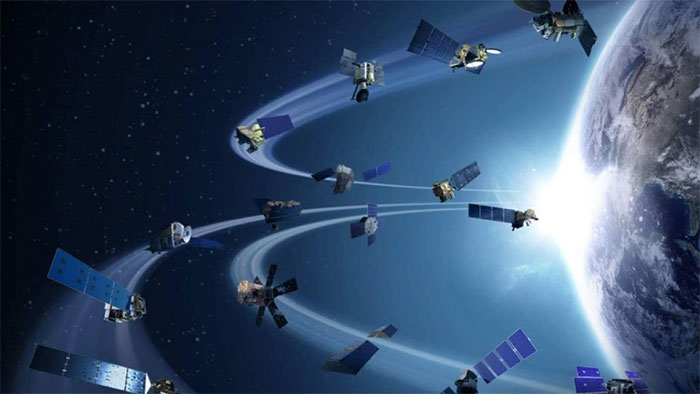The mass launch of Starlink satellites by SpaceX has raised concerns among many major organizations due to the excessive occupation of space around Earth.
“There is room for tens of billions of satellites. A few thousand satellites are nothing at all. It’s like having just a few thousand cars on Earth – it’s really nothing.”
This statement comes from Elon Musk – the CEO and founder of SpaceX, as he offers an interesting perspective comparing the number of satellites in orbit to the billions of cars and trucks operating on the surface of the Earth.
According to Musk, each “shell” in orbit around Earth is much larger than the planet’s surface – with a new shell forming every 10 meters outside of orbit. Therefore, launching a large number of satellites into orbit does not significantly impact activities in this area.
“Space is vast and the satellites are incredibly small,” Musk further explains. “It won’t be a situation where we can block anyone’s path. We won’t obstruct anyone and we don’t intend to do so.”
Musk’s explanation comes amid a wave of criticism from major organizations worldwide, which argue that the Starlink satellites are taking up too much space in the surrounding area of Earth.
Josef Aschbacher, the head of the European Space Agency (ESA), even stated that Elon Musk “is setting the rules” for the space economy.
“Elon Musk is rushing to launch thousands of communication satellites into Earth’s orbit and is occupying all the orbital space, as well as the communication frequencies of other organizations,” Aschbacher noted in a statement.

The excessive number of satellites raises concerns about “traffic congestion” in space.
Earlier in December, China also complained that two Starlink satellites nearly collided with their space station module, forcing the country to implement collision avoidance measures in October and July to ensure the safety and lives of astronauts in orbit.
Countering Musk’s viewpoint, Jonathan McDowell – an astronomer at the Harvard-Smithsonian Center for Astrophysics, argues that space vehicles move at speeds exceeding 27,000 km/h – significantly faster than a car.
This, combined with signal delays, leaves scientists with very little time to adjust positions to avoid collisions. Moreover, determining the likelihood of collisions between satellites is much more complex than with vehicles due to various factors influencing the orbits of multiple satellites and changes in the Sun’s motion.
He calculates that, at that speed, each orbital layer can accommodate only about 1,000 satellites to allow for timely collision avoidance.
To date, SpaceX has launched nearly 2,000 satellites for its Starlink space internet service and is preparing to launch tens of thousands more.


















































